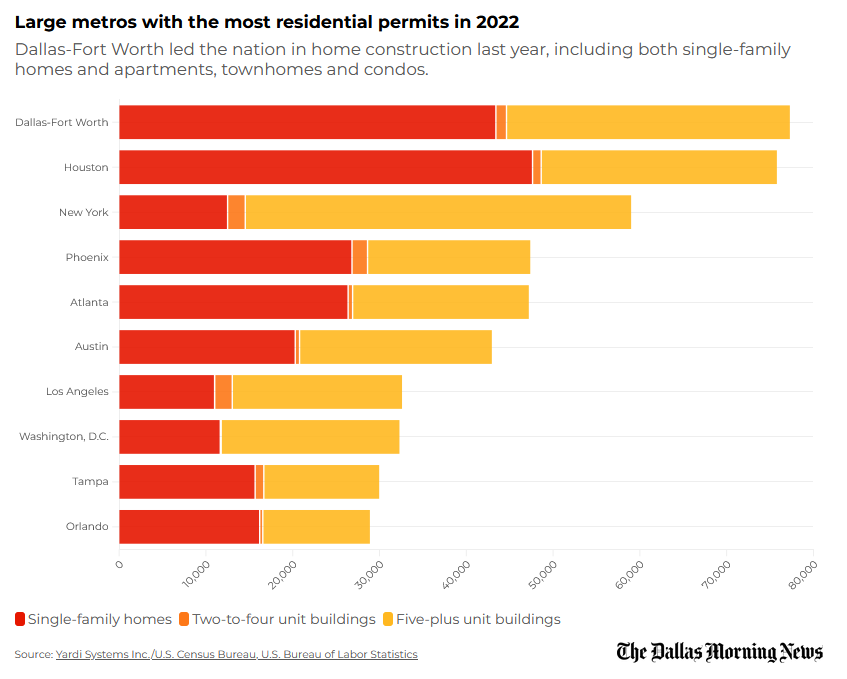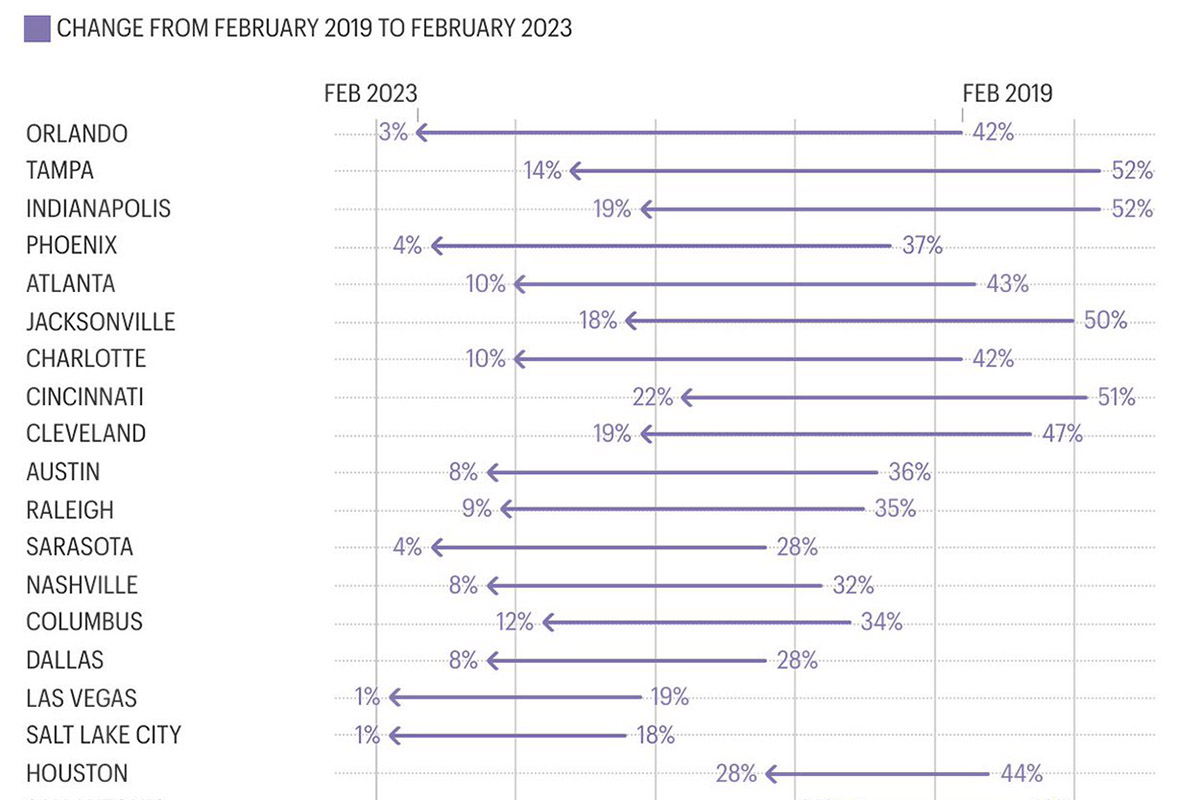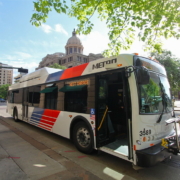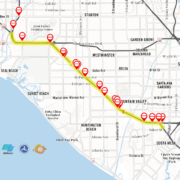The Decisive Argument for School Choice
A lot of smaller items to catch up on this week…
- Houston #1 for single-family home building permits, and a close #2 for total permits behind DFW. Austin gets the hype but Houston and DFW have the numbers. Hat tip to Oscar. Click/tap on graph for a larger version.
- Houston Alliance for Reasonable Traffic Solutions (ARTS). Fantastic site exposing how road diets are hugely problematic. Hat tip to Barry.
- The best argument I’ve seen for school choice: in states that have implemented it, public schools for low-income students have gotten dramatically better even while losing very few students!
- Fortune: The $300,000 starter home is going extinct (archive link): ‘A renter society not because of choice but because of force’ Affordability has collapsed across the country, although Houston and San Antonio continue to outperform. The Dallas collapse is surprising – almost as bad as Austin. Percentage of new homes under construction which are priced under $300,000, according to Zonda Home: (click/tap on graph for a larger version)
- Transit Agencies Go Insane. These numbers are absolutely bonkers and yet are getting no media coverage whatsoever:
“In the 1990s, light-rail lines that cost $50 million a mile ($100 million in today’s dollars) were considered extravagantly expensive. A decade ago, the average light-rail line cost about $125 million a mile ($160 million in today’s dollars). Last year, average light-rail construction costs had risen to $278 million a mile (about $310 million today).
This year, the average light-rail cost has grown to $384 million a mile. Average commuter-rail costs have grown from $232 million a mile last year to $447 million a mile. Average heavy-rail costs have exploded from $974 million a mile to $1.4 billion a mile.”
- Continuing the theme, Promise Rapid Transit, Deliver Streetcars:
“On November 2020, in the midst of the pandemic, Austin voters foolishly agreed to raise property taxes in order to build 28 miles of light rail at a projected cost of $5.8 billion. To avoid congestion, the downtown portion of light-rail lines would go through a four-mile-long tunnel.
No one reading this blog will be surprised to know that, in the short amount of time since then, projected costs have nearly doubled to $10.3 billion. Early this week, the city’s transit planners announced a new plan that would build fewer than half as many miles of light rail.”
- Houston maintains its top 3 position on ranking of cities that best attract biz
- Cost of living disparities mostly come down to housing. Really great interactive graphs that unfortunately won’t copy over to the blog, so be sure to check them out. Houston is the only major city in the lower left quadrant with both housing and non-housing costs below the national average.
This piece first appeared at Houston Strategies.
Tory Gattis is a Founding Senior Fellow with the Urban Reform Institute and co-authored the original study with noted urbanist Joel Kotkin and others, creating a city philosophy around upward social mobility for all citizens as an alternative to the popular smart growth, new urbanism, and creative class movements. He is also an editor of the Houston Strategies blog.
Photo: Gage Skidmore via Flickr under CC 2.0 License

 Gage Skidmore, used under CC 2.0 License
Gage Skidmore, used under CC 2.0 License




 Roy Luck
Roy Luck

